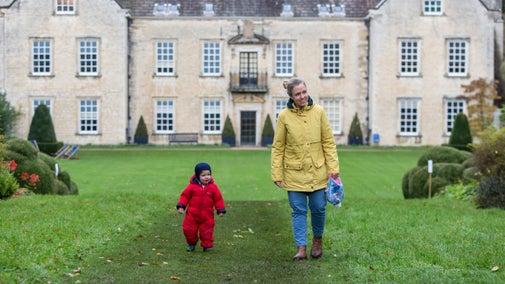
Discover more at Nunnington Hall
Find out when Nunnington Hall is open, how to get here, the things to see and do and more.

New research into the 19th-century owners of Nunnington Hall has helped us to trace the source of some of the wealth accumulated by the Rutson and Ewart families, who were closely linked in business and through marriage. Some of this wealth was derived from the slave trade and the products of enslaved labour. We still have much to discover and will continue to share this as our understanding grows.
Nunnington Hall was purchased by William Rutson in 1839 for £152,388. His family used the property as a sporting lodge, and used Newby Wiske Hall in Northallerton as their main home.
William and his mother were the main beneficiaries of his father’s will, so his personal wealth can be directly connected to his father’s business activities. The family of Charlotte Mary Ewart, William’s wife, were linked in business to the Rutsons.
Rutson’s grandfather, also William Rutson, was a cotton merchant and slave-trader. He operated from Liverpool and was a partner in the firm Backhouse and Rutson, described at the time as ‘African traders.’ Between 1780 and 1793, he invested in at least 42 voyages in which enslaved African people were transported across the Atlantic.
William Rutson’s father, William Calton Rutson, and Charlotte’s father, William Ewart, were two of the partners in the firm Ewart Rutson & Co (later Ewart Myers & Co). This company had a number of different business interests relating to the West Indies, and traded in goods produced by enslaved labour, particularly sugar.
Ewart Rutson & Co also acted as consignee for the merchant and plantation owner, Bertie Entwisle, which gave the firm the right to officially receive the goods produced on Entwisle’s plantations and to send them onward to his clients. The partners also invested in several West Indian plantations by taking mortgages out against them.
In 1817, William Ewart, William Carlton Rutson and a third unidentified person, had £15,000 secured on Saddle Hill, a sugar plantation in Nevis. This is a very significant amount of money, worth over £860,000 today.

Following the abolition of slavery in 1833, a fund was set up to compensate British slave owners. Partners in Ewart Myers & Co were awarded compensation for Long Lane Delp’s sugar plantation in Antigua. They received £2790 8s 8d for the land and 213 enslaved people upon it, worth about £168,000 today.
Charlotte’s brother was the Liberal politician William Ewart. Ewart had a financial stake in Nunnington and appears to have lent money to William Rutson to assist the purchase. Ewart voted in favour of the abolition of colonial slavery and spoke out against capital punishment.
In 1833 he made the first of a series of annual motions for the equalisation of the duties on East and West Indian sugars, as an indirect attack on the use of enslaved labour.
Through research, we will continue to develop our understanding of these particular elements of Nunnington’s history, sharing new information as it emerges.

Find out when Nunnington Hall is open, how to get here, the things to see and do and more.
A dwelling is recorded here since 1249, but the current house grew out of a Tudor Hall. Over 450 years the house has been altered to create an atmospheric and comfortable home.

The garden at Nunnington Hall is the perfect place to enjoy some peace and quiet. Peaceful hidden spots, colourful peacocks and colourful flowers offer a great day out.

Find out all you need to know about the roles we offer at Nunnington Hall, from story sharing to helping in the garden, and hear some thoughts from some of the volunteers themselves.

Discover how the conservation team at Nunnington care for the numerous items in our collections, and find out how we deal with certain unwelcome insect visitors to the Hall

Read our report on colonialism and historic slavery in the places and collections we care for and discover how we’re changing the way we approach these issues.

Learn about people from the past, discover remarkable works of art and brush up on your knowledge of architecture and gardens.

Explore the objects and works of art we care for at Nunnington Hall on the National Trust Collections website.
